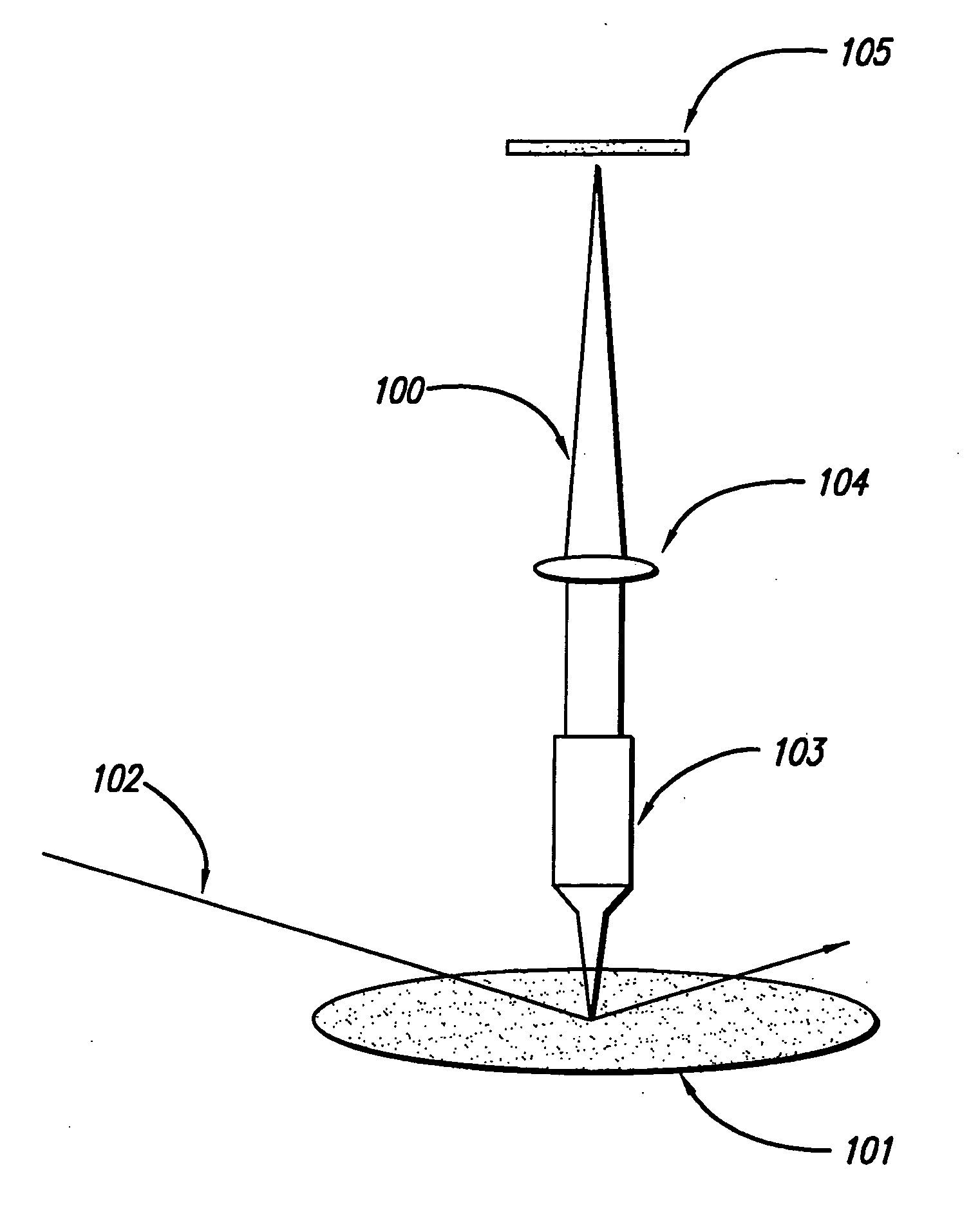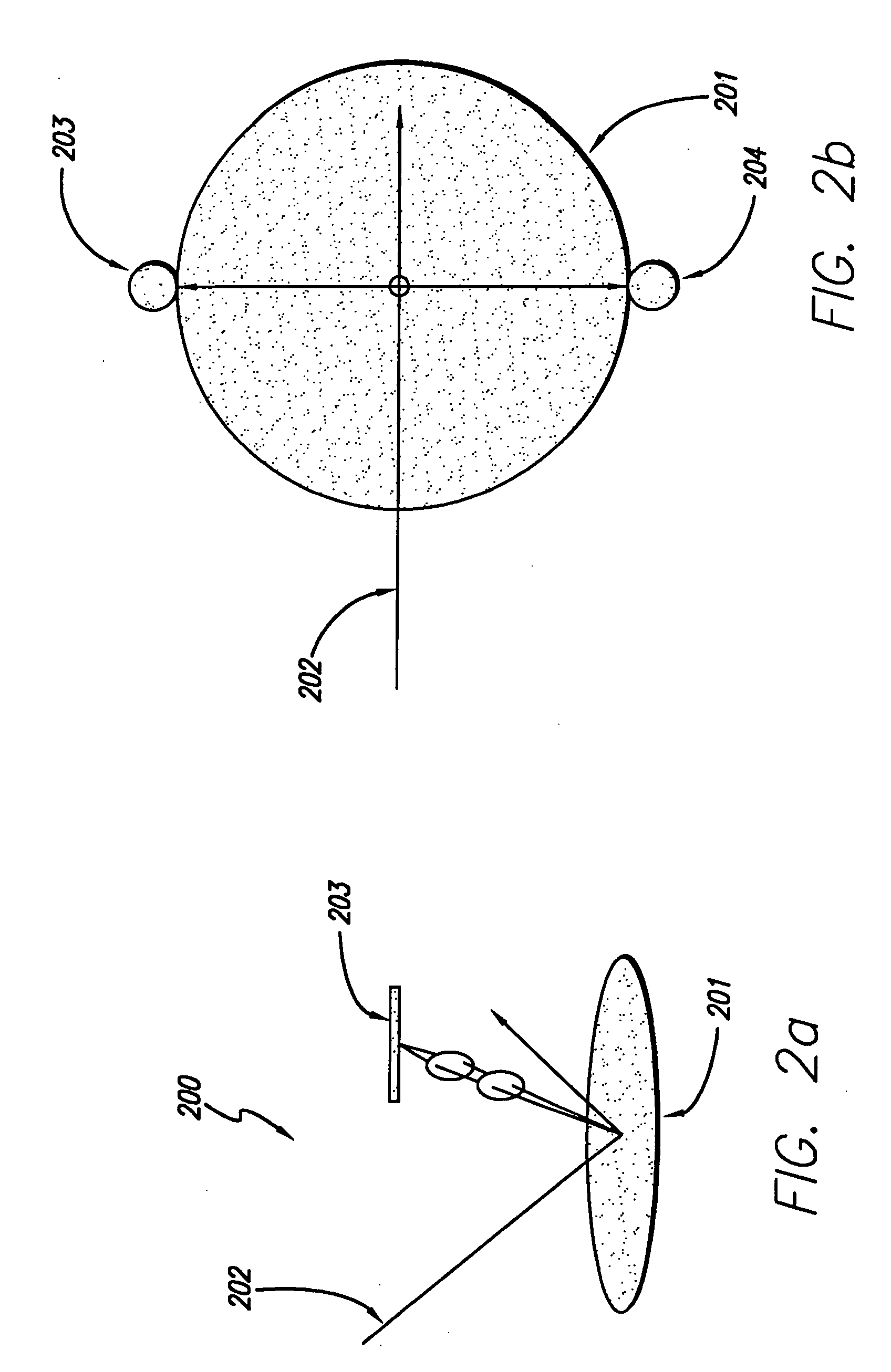High NA system for multiple mode imaging
a high-na system and imaging mode technology, applied in the field of catadioptric optical systems, can solve the problems of difficult detection of changes in the height of features in most imaging modes, affecting the operation of the image processing system, and requiring several separate, very expensive machines for full inspection of an object, etc., to achieve the effect of facilitating simultaneous operation, facilitating maximum flexibility, and relaxing manufacturing tolerances
- Summary
- Abstract
- Description
- Claims
- Application Information
AI Technical Summary
Benefits of technology
Problems solved by technology
Method used
Image
Examples
Embodiment Construction
[0087] Referring now to FIG. 7, shown is a figure illustrating an apparatus that combines the functions of several imaging systems. This apparatus, based on a high NA catadioptric optical design, is a narrow band optical system having an NA greater than 0.90 and is highly corrected for low and high order monochromatic aberrations. The system of the present invention may have a numerical aperture of greater than 0.65. Preferably the numerical aperture is greater than 0.90. The field size preferably ranges from 0.5 to 2.0 mm.
[0088] This high NA catadioptric optical design has been optimized with emphasis on manufacturability and flexibility for a multiple mode optical inspection system. Previous catadioptric systems were primarily optimized for broad band performance. For this reason these prior systems had NAs limited to 0.90 and field sizes limited to 1 mm. Previous designs had a tendency to be highly complicated with tight manufacturing tolerances and required two glass materials,...
PUM
| Property | Measurement | Unit |
|---|---|---|
| angle | aaaaa | aaaaa |
| illumination angles | aaaaa | aaaaa |
| collection angles | aaaaa | aaaaa |
Abstract
Description
Claims
Application Information
 Login to View More
Login to View More - R&D
- Intellectual Property
- Life Sciences
- Materials
- Tech Scout
- Unparalleled Data Quality
- Higher Quality Content
- 60% Fewer Hallucinations
Browse by: Latest US Patents, China's latest patents, Technical Efficacy Thesaurus, Application Domain, Technology Topic, Popular Technical Reports.
© 2025 PatSnap. All rights reserved.Legal|Privacy policy|Modern Slavery Act Transparency Statement|Sitemap|About US| Contact US: help@patsnap.com



